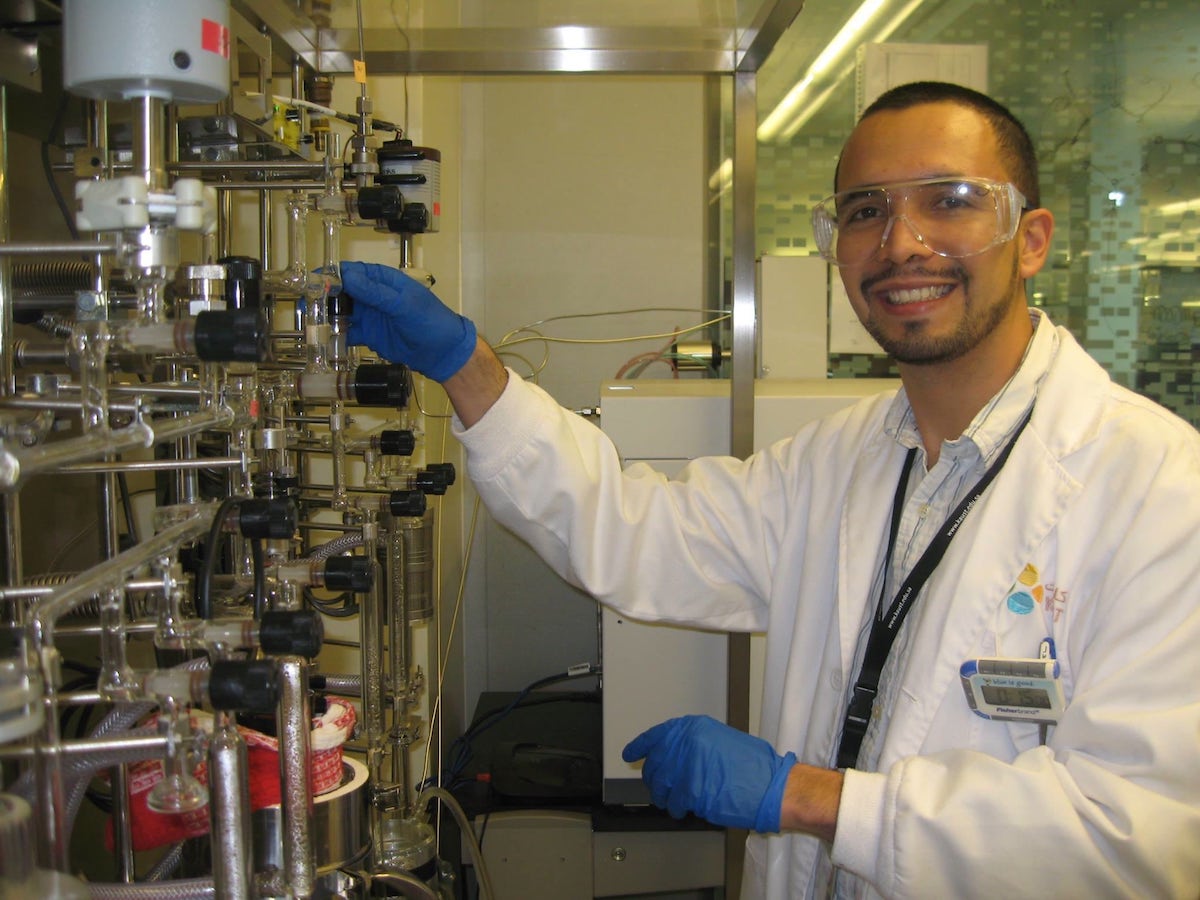Alumni Focus: Angel Garcia Esparza

KAUST alumnus Angel Garcia Esparza completed both his M.S. ('11) and Ph.D. ('16) degrees at the University. He is now a postdoctoral research fellow at Stanford University. Image courtesy of Angel Garcia Esparza.
-By Tanya Petersen, KAUST News
KAUST alumnus Angel Tonatiuh Garcia Esparza (M.S. '11, Ph.D. '16) is about to embark on an exciting journey.
Now a postdoctoral research fellow at Stanford University working at the Stanford Synchrotron Radiation Lightsource in the SLAC National Accelerator Laboratory, he was recently awarded beam time at SLAC's Linac Coherent Light Source—the world's first hard X-ray free-electron laser facility. The Linac Coherent Light Source takes X-ray snapshots of atoms and molecules at work in materials and in living things. Garcia Esparza's experiment will study the ultra-fast underlying processes occurring at the early stage of the water-splitting reaction for the production of solar hydrogen fuel.
This cutting-edge work builds on Garcia Esparza's interests in sustainable energy and achieving a carbon neutral society. His research is focused on using X-ray absorption spectroscopy to study catalytic materials for energy conversation applications. One of these projects is currently the transformation of methane and carbon dioxide into syngas—a mixture of hydrogen and carbon monoxide that it is used to make fuels and chemicals at large scale.
Before Stanford, Garcia Esparza completed both his M.S. degree in environmental science and engineering and his Ph.D. in chemical science at KAUST, with both degrees taking place under the supervision of Professor Kazuhiro Takanabe. He credits the KAUST Discovery Scholarship as a turning point in his career.
Alumnus Angel Garcia Esparza (M.S. '11, Ph.D. '16) is part of the University's founding class of students from 2009. He is pictured here (top row, first on left) on campus in September 2009, just after the University opened. File photo.
One of Garcia Esparza's most outstanding memories of KAUST is attending passionate professors' seminars and lectures, and this passion inspires his work to this day.
"We must move towards supplying energy to our exponentially growing society in the most sustainable way," he explained. "The transformation of greenhouse gases into valuable chemicals and fuels is a promising approach that, if achieved at industrial scale, could have a significant impact to accomplish a carbon-neutral society. In the long term, a sustainable cycle of using sunlight to split water to generate hydrogen fuel and then burning the hydrogen back to water is one of the ultimate goals of solar energy conversion."
As he continues his research journey in the U.S., Garcia Esparza noted that, having conducted research in Europe and the U.S., he realizes the immense advantage of pursuing graduate studies at KAUST.
"[KAUST] is the best place to try something new. Challenge yourself out of your comfort zone. Be ready to work hard. Explore all the possibilities. KAUST is the right place to fulfill radical ideas," he said.
Related stories:
- Alumni Focus: Qana A. Al-Sulami
- Alumni Focus: Chuan Xia
- Alumni Focus: Hassan Al-Ismail
-
Alumni Focus: Albara Alauhali

